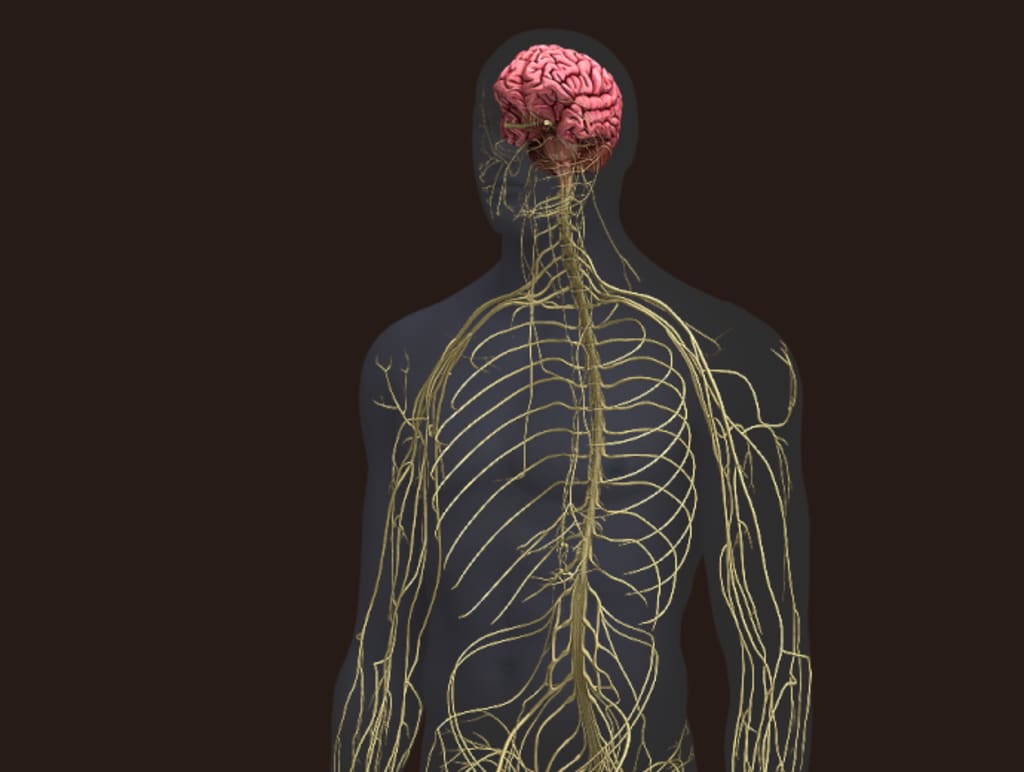Is our nervous system this complex ???
Unveiling the Power of Synapses: The Incredible Communicators of the Nervous System

Title: Unveiling the Power of Synapses: The Incredible Communicators of the Nervous System
Introduction:
What if I told you that something 1000 times thinner than a piece of paper, more numerous in you than grains of sand on a beach, holds the key to understanding the immense power of the smallest elements in your body? Welcome to the world of synapses, the meeting points between neurons that transform the structure of your nervous system into an extraordinary network of communication and intelligence.
The Power of Connections:
While neurons play a vital role in our nervous system, their true strength lies in their connections. A single neuron, without the ability to communicate with others, is rendered ineffective. The term "synapse" originates from the Greek word for "to clasp or join," symbolizing its role as a junction or crossroads. When an electrical message, known as an action potential, reaches the end of an axon, it encounters a synapse that translates and relays the message to another neuron. These connections, with their remarkable bio-electrical engineering, are not only astonishingly numerous but also critical for learning, memory, and even the onset of psychiatric disorders and addiction.
The Vast Network Within:
Consider the awe-inspiring numbers: the human brain alone houses approximately 100 billion neurons, each forming anywhere from 1000 to 10,000 synapses. This means that our brains contain a mind-boggling 100 to 1,000 trillion synapses. Each of these synapses acts as a miniature computer, capable of running multiple programs simultaneously and adapting over time based on neuronal firing patterns. They are the foundation of our ability to learn, remember, and experience a range of emotions and sensations.
The Language of Synapses:
The intricate signals transmitted by synapses form the basis of our experiences, from the euphoria of a delightful moment to the rumble of hunger or the fog of confusion. These signals comprise our body's remarkable electrochemical messaging system, ensuring effective communication between cells. Similar to email and texting etiquette, synapses possess a profound understanding of when to utilize different modes of communication. Some synapses transmit messages through electrical signals, akin to immediate group texts, while others employ chemical signals that take longer to reach their destinations but offer precise control, selectively targeting specific recipients.
The Dance of Electrical Synapses:
Electrical synapses facilitate lightning-fast communication by allowing an ion current to flow directly from one nerve cell to another through gap junctions. Unlike chemical synapses, electrical synapses bypass the need for signal conversion, enabling a single cell to trigger the synchronous activation of thousands of other cells. This rapid and coordinated signaling resembles the teamwork exhibited by muscle cells in the heart, where speed is of utmost importance. While this system is efficient for certain functions, it lacks the fine-tuned control necessary for the entire nervous system, as simultaneous activation of all surrounding neurons would result in constant stimulation, exhaustion, and ultimately, the cessation of vital functions.
The Precision of Chemical Synapses:
Chemical synapses, on the other hand, are more abundant and offer greater precision and selectivity in transmitting messages. These synapses employ neurotransmitters, chemical signals that diffuse across the synaptic gap and bind to receptor sites on the postsynaptic neuron. Unlike electrical synapses, chemical synapses can modify, amplify, inhibit, or split the signals, either instantaneously or over extended periods. The presynaptic neuron, acting as the sender, releases neurotransmitters from tiny synaptic vesicles within the presynaptic terminal. The postsynaptic neuron, the receiver, accepts these neurotransmitters through receptors on its dendrites or cell body. Despite not physically touching, these two neurons establish communication across a minute synaptic cleft.
From Electrical to Chemical and Back Again:
In chemical synapses, signals undergo
several transformations. Initially, the electrical signal traveling down the presynaptic neuron converts into a chemical signal when it reaches the axon terminal. This transformation allows the signal to traverse the synapse and reach the postsynaptic neuron. The neurotransmitters released by the presynaptic neuron bind to receptors on the postsynaptic neuron, generating a response. This response can either be excitatory, depolarizing the postsynaptic neuron and increasing the likelihood of an action potential, or inhibitory, hyperpolarizing the neuron and decreasing the likelihood of an action potential. Once the response is generated, it can either be terminated through reuptake by the presynaptic neuron or by enzymatic breakdown in the synaptic cleft.
Synaptic Plasticity: The Foundation of Learning and Memory:
The extraordinary capacity of synapses to adapt their strength over time, a phenomenon known as synaptic plasticity, underlies our ability to learn and remember. Synaptic plasticity allows the strengthening or weakening of specific connections between neurons based on their activity. When two neurons are frequently activated simultaneously, the synapse connecting them becomes stronger, a process known as long-term potentiation (LTP). Conversely, when two neurons are rarely activated together, the synapse weakens, a process called long-term depression (LTD). These fundamental mechanisms of synaptic plasticity provide the foundation for memory formation and the storage of information in the brain.
Disruptions in Synaptic Function: Implications for Health and Disease:
Given the pivotal role of synapses in the proper functioning of the nervous system, any disruptions can have significant consequences. Altered synaptic function has been linked to various neurological and psychiatric disorders, such as Alzheimer's disease, Parkinson's disease, schizophrenia, and addiction. Understanding the underlying synaptic changes associated with these conditions holds the potential for developing targeted treatments. Researchers are investigating how changes in neurotransmitter release, receptor density, and the structure of synapses contribute to the development and progression of these disorders. By uncovering the intricacies of synaptic dysfunction, novel therapeutic strategies may emerge, offering hope to millions worldwide.
Conclusion:
Synapses, the remarkable connectors between neurons, form the backbone of our nervous system's communication network. Their intricate mechanisms enable our brains to process information, learn, remember, and experience the world around us. From the lightning-fast electrical synapses to the precision of chemical synapses, these tiny structures are responsible for our intelligence, emotions, and overall well-being. By unlocking the secrets of synapses, we may gain unprecedented insights into the complexities of the human mind and pave the way for groundbreaking advancements in neuroscience and medicine.





Comments
There are no comments for this story
Be the first to respond and start the conversation.